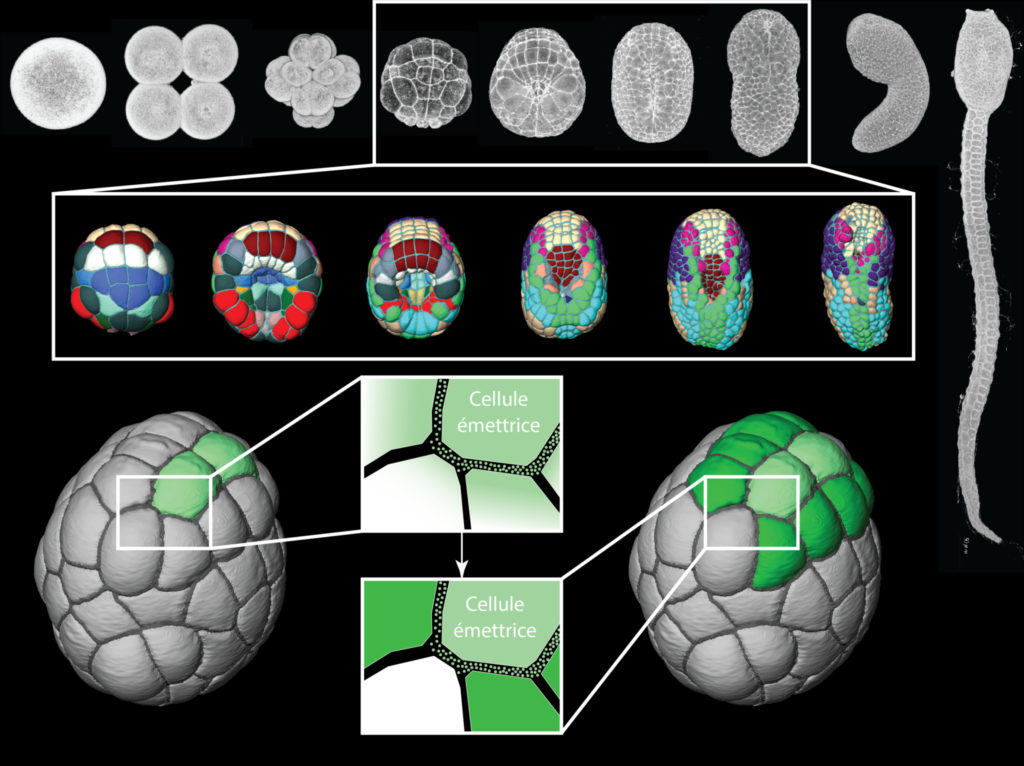Montpellier Node participated on a study of the dynamics of cell movement during embryonic development
During embryonic development, cells take on increasingly precise roles in the body as they divide. Be they skin cells, muscle cells or neurons, the different cell types that make up the embryo emerge gradually from a very fine orchestration of their positions and identities, coordinated by the signals they exchange with each other. Like us, the cells need to “talk” to each other to make decisions.
Screaming or whispering: the embryonic cell dilemma
In vertebrate embryos, cells have a very dynamic behaviour. They move around, exchange their neighbours or migrate over long distances. The signals they exchange therefore need to have a long range, which could be characterized as “shouting”. The study of the embryonic development of a sea squirt, a small marine animal with optically transparent embryos, has enabled scientists from several teams at CNRS and INRIA in France, in collaboration with a team from the European Molecular Biology Laboratory (EMBL, Germany), to capture and describe in detail a more discreet mode of cell communication.
The scientists recorded the development of live embryos every two minutes with a new-generation « light-sheet » microscope. They then created software to automatically detect each cell and analyze its position, shape and neighbours up to an advanced stage of development. This work revealed an unusually reproducible mode of development, in which the same cell can be found in the same position across all embryos and where cells move very little in relation to each other. The authors of the study then annotated the films thus made with information on the cell type and the molecular signals emitted by each cell. Using mathematical modelling to integrate the quantitative description of the embryonic geometry with these annotations, their work suggest that cells communicate with very short-range signals. Moreover, the interpretation of these signals is modulated by the area of the contacts between cells. Unlike vertebrates, the cells of ascidian embryos thus have a static and fixed behaviour and the range of their “whispered” signals is very small.

This study indicates that the dynamics of cell movement varies greatly between animals and that these different modalities could be strongly related to the range of signals that the cells exchange with each other. By extending the repertoire of cellular communication mechanisms, this work opens new perspectives on the understanding of self-organization strategies of living forms.
Article: L. Guignard*, U.-M. Fiuza*, B. Leggio, J. Laussu, E. Faure, G. Michelin, K. Biasuz, L. Hufnagel, G. Malandain, C. Godin#, P. Lemaire# (2020) Contact-area dependent cell communications and the morphological invariance of ascidian embryogenesis (Science, July 10 2020 issue, https://science.sciencemag.org/content/369/6500/eaar5663)
